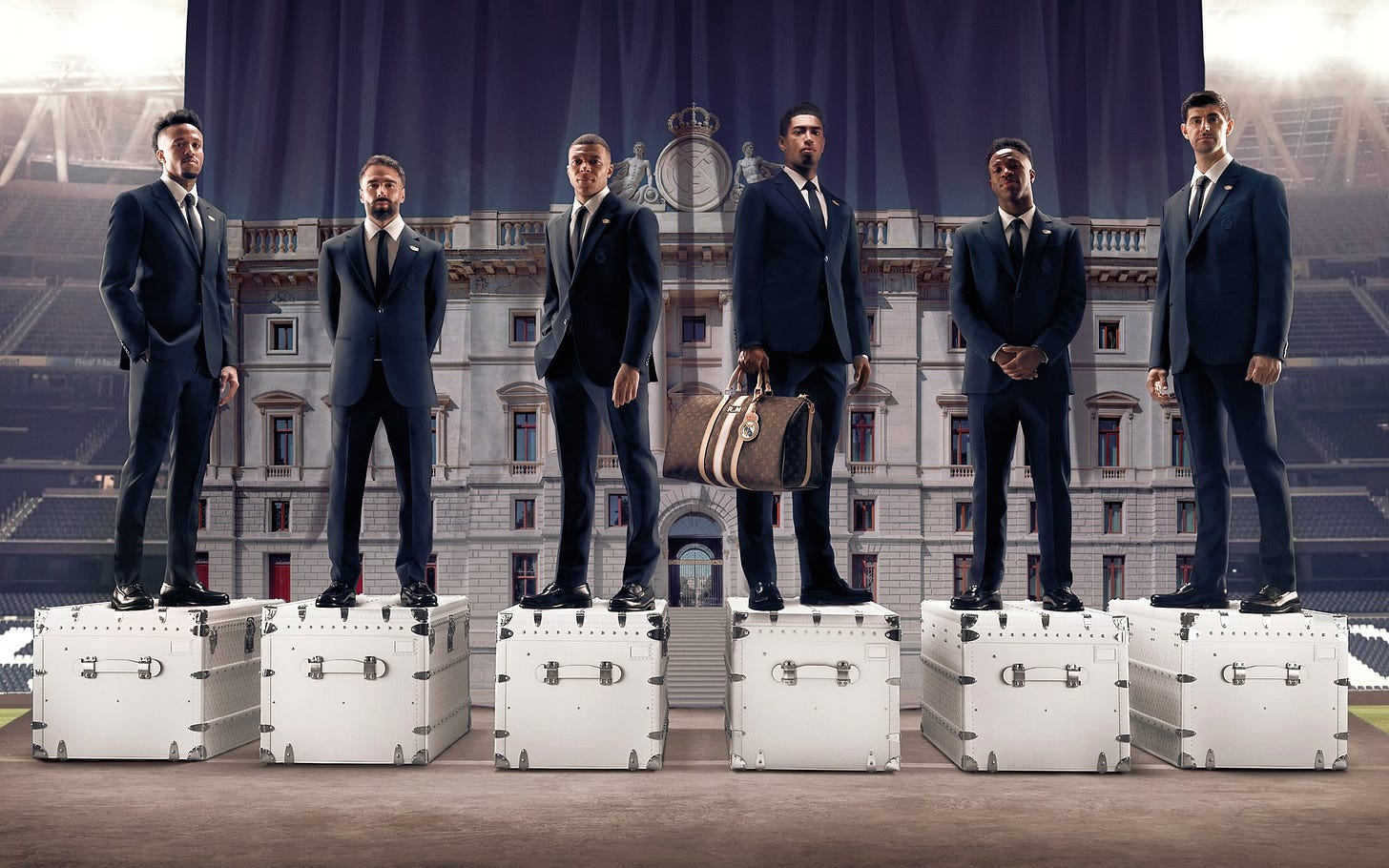How fashion partnerships amplify elite football's industrial scale gentrification
Luxury brand deals are now the name of the game for the sport's top clubs
In the same week that it topped the annual Deloitte Football Money League (with revenues exceeding €1 billion), Real Madrid announced a deal with luxury giant Louis Vuitton, which will see the French company become official formalwear and travel piece partner of the Spanish club.
The tie-up was perhaps no surprise as Louis Vuitton’s Men’s Creative Director is Pharrell Williams, who has also worked extensively with Real’s kit supplier Adidas.
Indeed, Williams previously worked on shirt designs for the Madrid club and was responsible for designing the Adidas Human Race collection.
Earlier this year, Williams also collaborated with Moet Chandon, another LVMH owned brand (the parent company of Louis Vuitton).
In 2024, LVMH acquired a majority stake in French football club Paris FC.
Forbes has identified Louis Vuitton as the world's most valuable luxury brand.
Football’s relationship with fashion and champagne is nothing new, though what was once an accessible association is now evidence of the sport’s industrial scale gentrification.
Real’s deal with LVMH might make sense for players (most of whom are presumably multi-millionaires), for LVMH who often sell clothes and accessories to them, and for the club’s revenue streams.
But for many football fans, there is probably a feeling that such partnerships are pushing the game further and further beyond their reach.
One interpretation of what is happening is that it constituents the ongoing gentrification of elite football.
In broad terms, gentrification is a change whereby historic places and spaces encounter an influx of both more affluent people and significant investment, leading to changes in human geography, culture and economy of these places and spaces.
Following gentrification, consumers within these places and places are likely to be more affluent, drive price increases, and be responsible for changing the socio-cultural character of what they consume.
In football terms, gentrification can have displacement effects, perhaps by pricing out some fans, or by changing the way in which products are delivered, alienating people from important parts of their lives.
This is happening on an industrial scale in sport: for instance, LVMH employs 83,000 people, in stores 6,307 stores worldwide, where a women’s handbag can cost as much as £13,500.
Meanwhile, estimates indicate Real Madrid has 400 million fans worldwide, its recent stadium refurbishment cost €2 billion, while its wage bill is approaching €300 million.
Such costs partly explain why football clubs need to partner with luxury brands such as Louis Vuitton.
However, this process is inevitably taking both clubs and football in general away from some fans, especially those who are economically disadvantaged.
Luxury brand deals presumably make sense to some of football’s stakeholders, especially those with significant, economically derived power, but for many others they will be a sign that the game they once knew is fast disappearing.
Footnote
The above image was sourced from:




